Fitbit and Apple know their smartwatches aren’t medical devices. But do you? was written by Lisa Eadicicco for cnet.com, 14 January 2022. The line is blurring as wearables become more advanced. And it’s only getting more complicated.
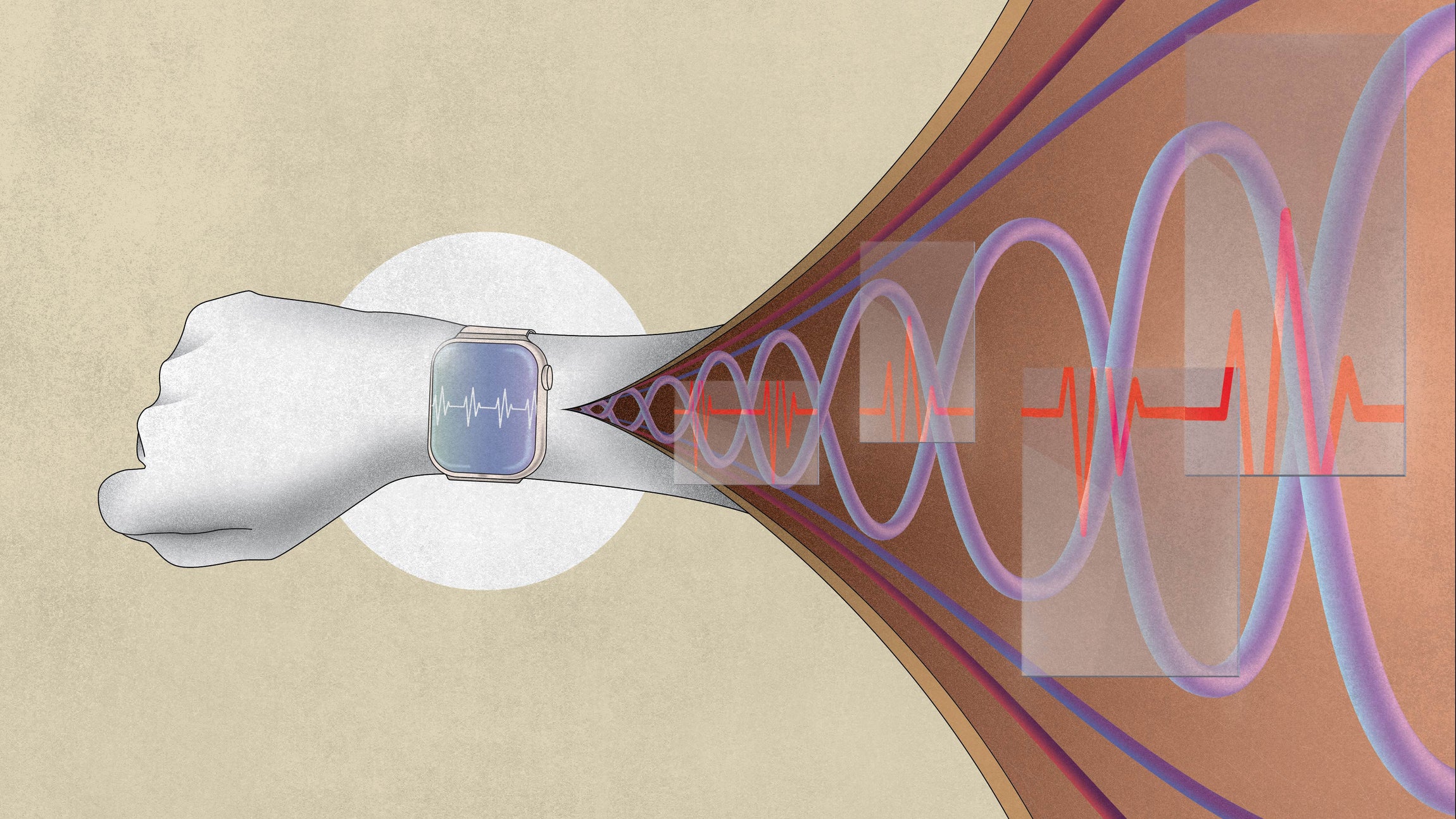 The Fitbit Sense and similar wearables such as the Apple Watch aren’t intended for medical diagnosis, a distinction that gadget makers are very clear about. Yet smartwatches and fitness bands can now track metrics, such as blood oxygen saturation and body fat estimates, that may have previously required a visit to the doctor or a specialized device. Today’s wearables are much more than just activity trackers, but they’re also not a replacement for medical care, nor are they trying to be. So then what exactly are they?
The Fitbit Sense and similar wearables such as the Apple Watch aren’t intended for medical diagnosis, a distinction that gadget makers are very clear about. Yet smartwatches and fitness bands can now track metrics, such as blood oxygen saturation and body fat estimates, that may have previously required a visit to the doctor or a specialized device. Today’s wearables are much more than just activity trackers, but they’re also not a replacement for medical care, nor are they trying to be. So then what exactly are they?
The data is much more advanced as these devices have matured. But companies are still figuring out the best ways to make sense of that data without overstepping the boundaries of what a non-medical device should do. “There is a distinction between measurements for wellness, which provide general guidance and would encourage you to exercise in a way that’s helpful for you and to eat more healthy foods, and a medical device,” Dr. Paul Friedman, a cardiologist in the Mayo Clinic’s AI in Cardiology Work Group. “And I think the blurring of those is causing some confusion.”
What can tech companies do besides being transparent about their metrics? One possible solution could be clinically supervised chatbots that can answer some questions when a wearer’s doctor might not be available, says Dr. Devin Mann, associate professor of population health and medicine at New York University Langone Health. Mount Sinai’s Dr. Zahi Fayad would like to see more tools for easily sharing data from these devices with doctors, an option that companies like Apple, Fitbit, Oura and Whoop already offer to some degree today.
Read more: Fitbit and Apple know their smartwatches aren’t medical devices. But do you?
Let’s look at NAFLD – Non Alcoholic Fatty Liver Disease
Family history of diabetes may increase risk for NAFLD was reported by Michael Monostra for Healio.com/endocrinology, 11 January 2022.
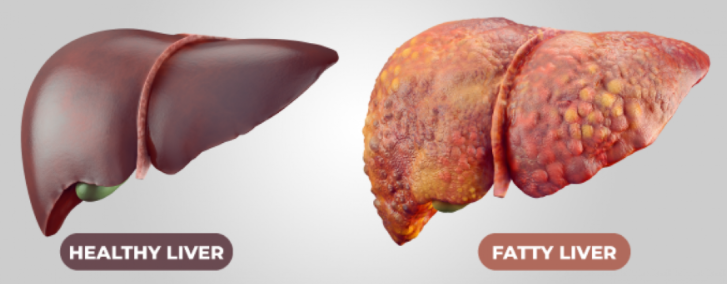 People with a parent, sibling or child with diabetes have increased risk for developing nonalcoholic fatty liver disease, or NAFLD, regardless of their own glucose status, according to study findings.
People with a parent, sibling or child with diabetes have increased risk for developing nonalcoholic fatty liver disease, or NAFLD, regardless of their own glucose status, according to study findings.
“The first-degree relatives of patients with diabetes share a common genetic background with patients with diabetes, which predisposes them to insulin secretion deficiency and asymptomatic insulin resistance at a young age,” Junping Wen, MD, chief physician of endocrinology at Fujian Provincial Hospital and professor at Fujian Medical University in China, and colleagues wrote. “Nevertheless, few clinical studies have explored the association between NAFLD and first-degree family history of diabetes, and the conclusions have not reached consistency. … Using fatty liver index to identify NAFLD, the present study aimed to investigate the association between first-degree family history of diabetes and NAFLD among the community population, as well as the influence of traditional and metabolic factors, especially glucose metabolic status, on this association.”
“Regardless of the status of glucose metabolism, first-degree relatives of patients with diabetes were more susceptible to NAFLD,” the researchers wrote. “Therefore, for first-degree relatives of patients with diabetes, even in the absence of diabetes, it is important to screen and prevent NAFLD in the early stage.”
Read more: Family history of diabetes may increase risk for NAFLD
Remnant Lipoprotein Cholesterol May Predict Fatty Liver Disease Risk was written by Brandon May for EndocrinologyAdvisor.com, 10 January 2022.
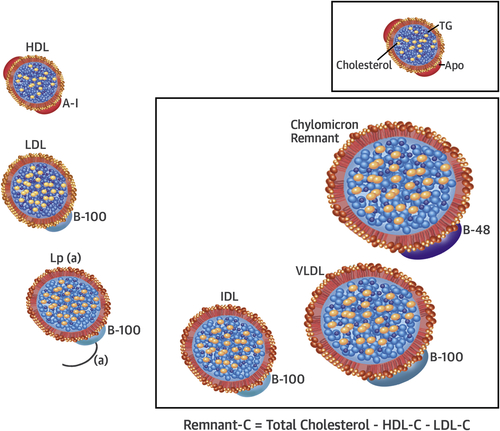 Remnant lipoprotein cholesterol (RLP-C) features a strong and positive correlation with the occurrence and severity of fatty liver disease (FLD), suggesting RLP-C, among other variables, could be used as a marker to predict disease risk and improve early initiation of risk mitigation strategies,. These findings were published in the Journal of Clinical Endocrinology and Metabolism.
Remnant lipoprotein cholesterol (RLP-C) features a strong and positive correlation with the occurrence and severity of fatty liver disease (FLD), suggesting RLP-C, among other variables, could be used as a marker to predict disease risk and improve early initiation of risk mitigation strategies,. These findings were published in the Journal of Clinical Endocrinology and Metabolism.
The researchers concluded using their 8-variable fatty liver disease discriminant model, along with RLP-C level measurement, may be a simple and economical tool that can provide reliable FLD risk discrimination in clinical practice. “This can also help clinicians to identify individuals with high FLD risk, to guide these individuals to perform ultrasound examination to confirm the diagnosis and initiate medical interventions early to improve their quality of life,” they wrote.
Read more: Remnant Lipoprotein Cholesterol May Predict Fatty Liver Disease Risk
What You Should Know About Exocrine Pancreatic Insufficiency (EPI) or Pancreatic Exocrine Insufficiency (PEI) was written by Dana Lewis, founder of OpenAPS, the first open-source closed-loop system, for DIYPS.org, 14 January 2022. This is a GREAT READ!!!
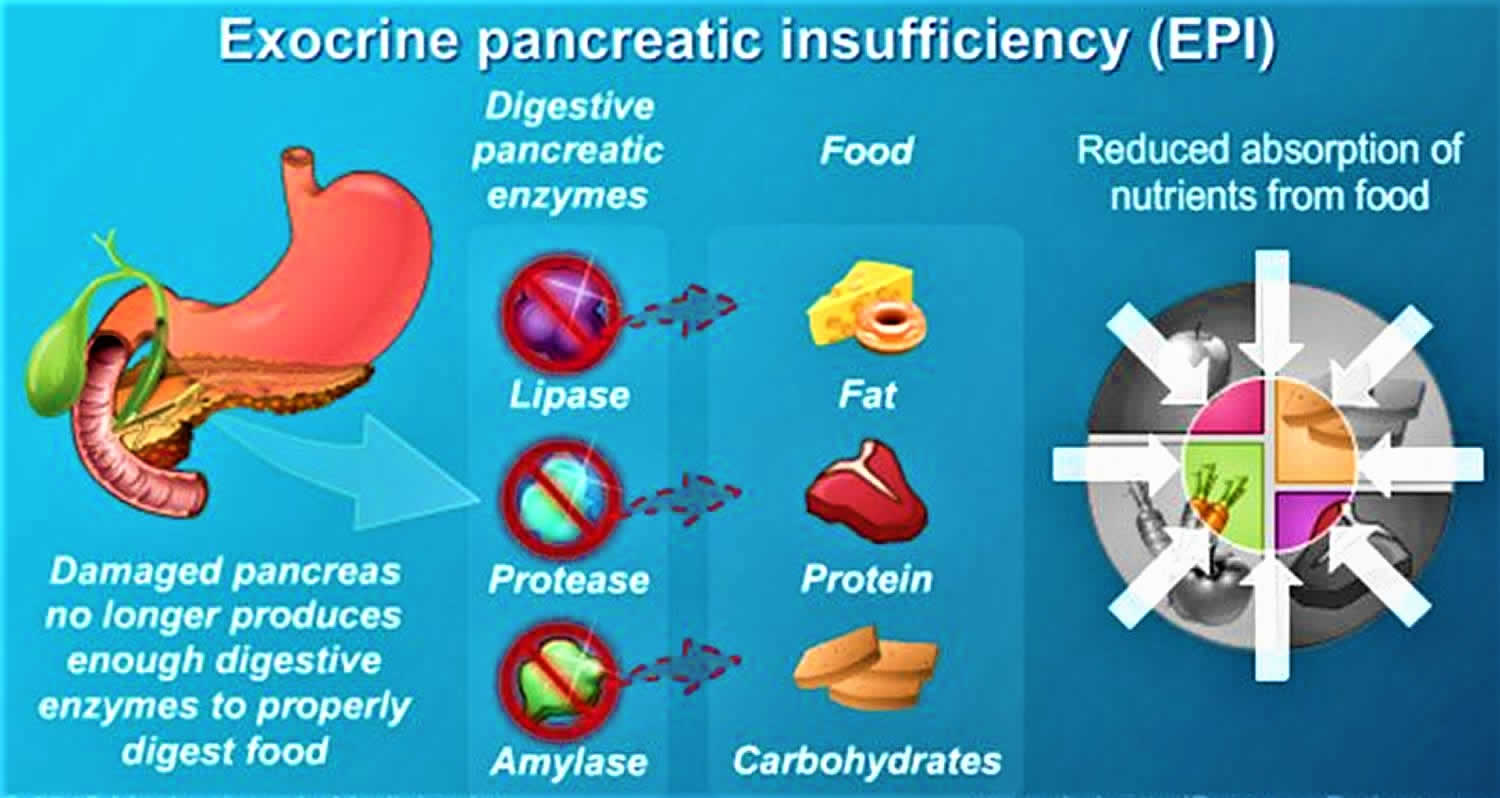 Dana shares her journey as she self-advocated to learn that she has a “new” part-time job as a pancreas. “I have a new thing, exocrine pancreatic insufficiency, to deal with. Thankfully, there’s a treatment (PERT) that I can use to reduce symptoms and hopefully limit the potential impacts on morbidity long term. If you have diabetes or celiac and you have unexplained GI symptoms over time, you might want to do some research into EPI and discuss it with your gastroenterologist.”
Dana shares her journey as she self-advocated to learn that she has a “new” part-time job as a pancreas. “I have a new thing, exocrine pancreatic insufficiency, to deal with. Thankfully, there’s a treatment (PERT) that I can use to reduce symptoms and hopefully limit the potential impacts on morbidity long term. If you have diabetes or celiac and you have unexplained GI symptoms over time, you might want to do some research into EPI and discuss it with your gastroenterologist.”
Various studies estimate 40% of people with type 1 diabetes have low levels of pancreatic elastase, which is a proxy for determining if you have insufficient enzymes being produced by your pancreas to help you digest your food. The causal mechanism is unclear, so they don’t know whether it’s just a ‘complication’ and side effect of diabetes and the pancreas no longer producing insulin, or if there is something else going on.
Unfortunately, there is no cure for exocrine pancreatic insufficiency. Like Type 1 diabetes, it requires lifelong treatment. So, I will be taking insulin and now PERT likely for the rest of my life. Lazy pancreas! (Also, it’s possible I will need to increase my PERT (pancreatic enzyme replacement therapy ) dose over time if my insufficiency increases.)
Why treat EPI? Well, beyond managing very annoying symptoms that impact quality of life, if left untreated it’s associated with increased mortality (e.g. dying earlier than you would otherwise) due to malnutrition (because you’re not properly absorbing the nutrients in the food you’re eating) and bone density problems.
Sadly, like so many GI conditions (remember in the intro I referenced 7 years average diagnosis time with celiac), it seems ridiculously hard to get to a diagnosis of EPI. I essentially self-diagnosed myself (and confirmed the diagnosis in partnership with my GI doc who agreed to run the tests). I am still very surprised that it never came up on his list of possible conditions despite having symptoms that are textbook EPI and having diabetes and celiac, which are known correlations. Apparently, this is common.
Stair walking for 10 minutes may lower glucose and insulin, improve insulin sensitivity was reported by Michael Monostra for Healio.com/endocrinology, 10 January 2022.
 Moderate-intensity stair walking for as little as 3 minutes can lower glucose and insulin concentrations, and 10 minutes of stair walking can improve insulin sensitivity, according to study findings.
Moderate-intensity stair walking for as little as 3 minutes can lower glucose and insulin concentrations, and 10 minutes of stair walking can improve insulin sensitivity, according to study findings.
“Short duration, moderate-intensity stair-stepping causes a decrease in peak postprandial glucose and insulin levels with as little as 3 minutes, but longer — 10 minutes — stepping was necessary to also increase in insulin sensitivity after a standard glucose challenge,” Jeff Moore, MS, professor at San Diego State University School of Exercise and Nutritional Science and a PhD student at the Lundquist Institute for Biomedical Innovation at Harbor-UCLA Medical Center, and colleagues wrote in a study published in Nutrition, Metabolism and Cardiovascular Diseases. “This intervention had no effect on antioxidant capacity.”
The 10-minute climbing intervention was associated with an increase in insulin sensitivity (delta = 1.81; 95% CI, 0.03-3.58; P < .048). No changes in insulin sensitivity were observed with 3 minutes of climbing or 1 minute of climbing. None of the three climbing exercises was associated with changes in antioxidant capacity or lactate.
Read more: Stair walking for 10 minutes may lower glucose and insulin, improve insulin sensitivity
“Different every step of the way” – A Dexcom G7 Update (and more) with CEO Kevin Sayer was recorded with Stacey Simms of Diabetes-Connections.com, 11 January 2022.
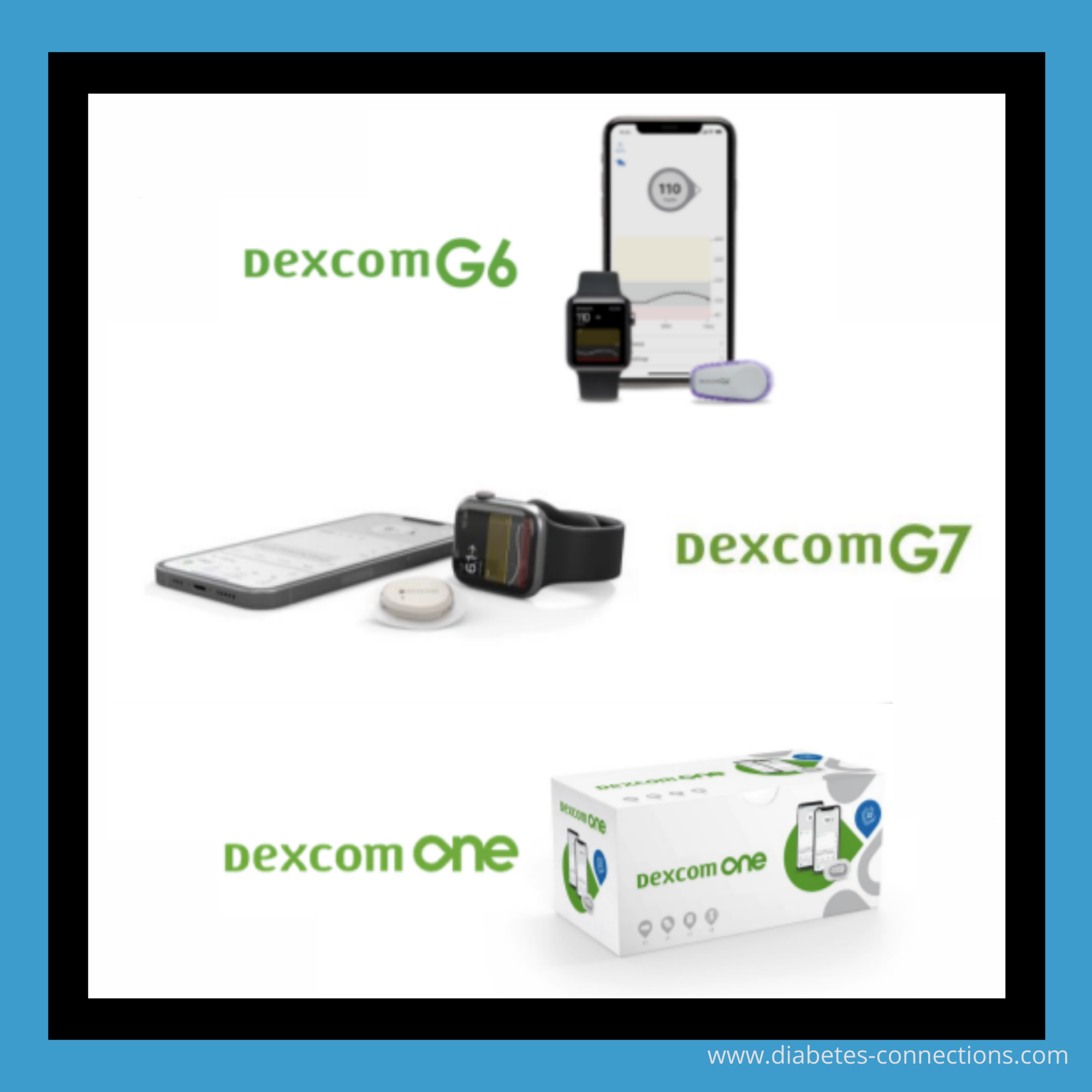 In early January 2022, Dexcom CEO Kevin Sayer spoke to the JP Morgan Healthcare Conference about the G7 and beyond. Stacey Simms talked with Kevin Sayer about information from that presentation. This interview took place on Tuesday, Jan 11 and much of what was discussed isn’t FDA approved.
In early January 2022, Dexcom CEO Kevin Sayer spoke to the JP Morgan Healthcare Conference about the G7 and beyond. Stacey Simms talked with Kevin Sayer about information from that presentation. This interview took place on Tuesday, Jan 11 and much of what was discussed isn’t FDA approved.
Read the transcript: A Dexcom G7 Update (and more) with CEO Kevin Sayer


Hey, I like the new Dexcom box. I guess I better squirrel some of the current ones away. I love them for travel.